List of animals by number of neurons
.png)
.png)
This is a list of representative animals by the number of neurons in their whole nervous system and the number of neurons in their brain (for those with a brain). These numbers are estimates derived by multiplying the density of neurons in a particular animal by the average volume of the animal's brain.
The whole human brain contains 86 billion neurons and either 19 or 23 (respectively female and male) billion neurons in the cerebral cortex.
Overview
Neurons are the cells that transmit information in an animal's nervous system so that it can sense stimuli from its environment and behave accordingly. Not all animals have neurons; Trichoplax and sponges lack nerve cells altogether.
Neurons may be packed to form structures such as the brain of vertebrates or the neural ganglions of insects.
The number of neurons and their relative abundance in different parts of the brain is a determinant of neural function and, consequently, of behavior.
Whole nervous system
All numbers for neurons but Caenorhabditis and all numbers for synapses are estimations.
| Name | Neurons in the brain/whole nervous system | Synapses | Details | Image | Source |
|---|---|---|---|---|---|
| Sponge | 0 | [1] | |||
| Trichoplax | 0 |  | [2] | ||
| Caenorhabditis elegans (roundworm) | 302 | ~7,500 | |
[3] | |
| Jellyfish | 5,600 | Hydra vulgaris (H. attenuate) |  | [4] | |
| Box jellyfish | 8,700-17,500 | adult Tripedalia cystophora (8 mm diameter) - does not include 1000 neurons in each of the four rhopalia | 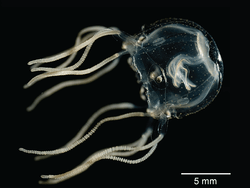 | [5] | |
| Medicinal leech | 10,000 | [6] | |||
| Pond snail | 11,000 | 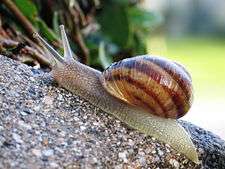 |
[7] | ||
| Sea slug | 18,000 | 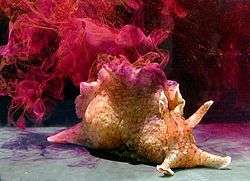 | [8] | ||
| Amphioxus | 20,000 | central nervous system only |  | [9] | |
| Fruit fly | 250,000 | <1×107 | .jpg) |
[11] | |
| Larval zebrafish | 100,000 |  |
[13] | ||
| Lobster | 100,000 |  |
[14] | ||
| Ant | 250,000 | Varies per species | 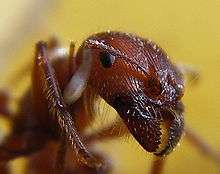 |
[15] | |
| Honey bee | 960,000 | ~1×109 |  |
[17] | |
| Cockroach | 1,000,000 |  | [18] | ||
| Adult zebrafish | ~10,000,000 | cells (neurons + other) | |
[19] | |
| Frog | 16,000,000 | _crop.jpg) | [20] | ||
| Smoky shrew | 36,000,000 | 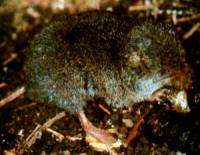 |
[21] | ||
| Short-tailed shrew | 52,000,000 |  |
[21] | ||
| House mouse | 71,000,000 | ~1×1012 |  |
[22] | |
| Golden hamster | 90,000,000 |  |
[22] | ||
| Star-nosed mole | 131,000,000 | 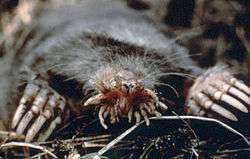 |
[21] | ||
| Zebra finch | 131,000,000 | Brain only | .jpg) |
[23] | |
| Brown rat | 200,000,000 | ~4.48×1011 | 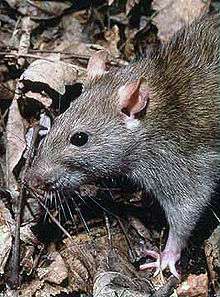 |
[24] | |
| Eastern mole | 204,000,000 | 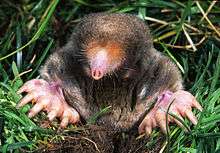 |
[21] | ||
| Guinea pig | 240,000,000 | .jpg) |
[22] | ||
| Common treeshrew | 261,000,000 |  |
[25] | ||
| Pigeon | 310,000,000 | Brain only | |
[23] | |
| Octopus | 500,000,000 |  | [26] | ||
| Common marmoset | 636,000,000 | 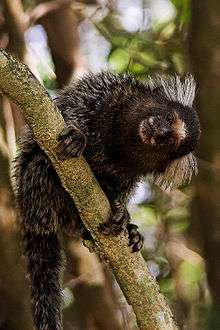 |
[25] | ||
| Cat | 760,000,000 | ~1×1013 |  |
[27] | |
| Black-rumped agouti | 857,000,000 | .jpg) |
[22] | ||
| Northern greater galago | 936,000,000 | .jpg) |
[25] | ||
| Three-striped night monkey | 1,468,000,000 | 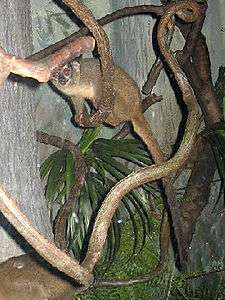 |
[25] | ||
| Capybara | 1,600,000,000 |  |
[22] | ||
| Raven | 2,171,000,000 | Brain only | _(8).jpg) |
[23] | |
| Common squirrel monkey | 3,246,000,000 | 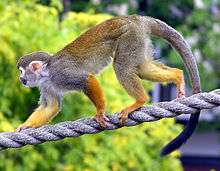 |
[25] | ||
| Tufted capuchin | 3,691,000,000 | _4.jpg) |
[25] | ||
| Rhesus macaque | 6,376,000,000 | 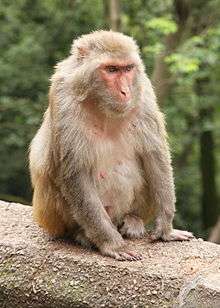 |
[25] | ||
| Human | 86,000,000,000 | ~1.5×1014 | Synapses for average adult | |
[28][29][30] |
| African elephant | 257,000,000,000 |  |
[31][32] |
Cerebral cortex
Only mammals appear in this list, because only mammals have a cerebral cortex (although the pallium of reptiles and birds is also frequently referred to as "cortex".)
| Name | Neurons in the cerebral cortex | Details | Image | Source |
|---|---|---|---|---|
| Mouse | 4,000,000 | Genus Mus, musculus |  |
[7] |
| Rat | 18,000,000 | Genus Rattus, unknown species | 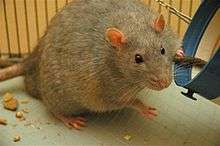 |
[33] |
| Hedgehog | 24,000,000 | Subfamily Erinaceinae, unknown genus and species |  |
[33] |
| Opossum | 27,000,000 | Family Didelphidae, unknown genus and species |  |
[33] |
| Dog | 160,000,000 | Canis lupus familiaris | 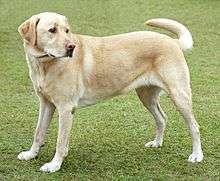 |
[7] |
| Cat | 300,000,000 | Felis catus or Felis silvestris catus |  |
[7] |
| Tarsius | 310,000,000 | Genus Tarsius, unknown species | |
[35] |
| Squirrel monkey | 430,000,000 | Genus Saimiri, unknown species | 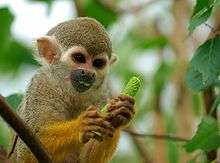 |
[36] |
| Domesticated pig | 425,000,000 | Sus scrofa |  |
[37] |
| Raccoon | 453,000,000 | .jpg) |
[38] | |
| Rhesus macaque | 480,000,000 | Macaca mulatta |  |
[33] |
| Gracile capuchin monkey | 650,000,000 | Genus Cebus, unknown species |  |
[36] |
| Horse | 1,200,000,000 | Equus ferus caballus | 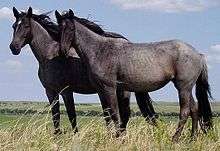 |
[21] |
| Guenon | 2,500,000,000 | Genus Cercopithecus, unknown species | 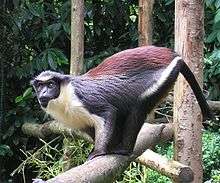 |
[35] |
| Gorilla | 4,300,000,000 | Genus Gorilla, unknown species | 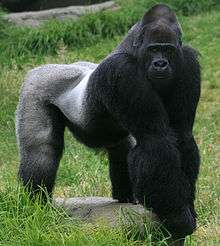 |
[36] |
| Chimpanzee | 6,200,000,000 | Genus Pan, unknown species |  |
[7] |
| False killer whale | 10,500,000,000 | Pseudorca crassidens |  |
[21] |
| African elephant | 11,000,000,000 | Genus Loxodonta, unknown species | |
[21] |
| Fin whale | 15,000,000,000 | Balaenoptera physalus |  |
[39] |
| Human | 21,000,000,000 | For average adult "The average number of neocortical neurons was 19 billion in female brains and 23 billion in male brains." |
|
[30] [40] |
| Long-finned pilot whale | 37,200,000,000 | Globicephala melas: "For the first time, we show that a species of dolphin has more neocortical neurons than any mammal studied to date including humans." |  |
[41] |
See also
References
- ↑ Sherwood L, Klandorf H and Yancey P (2012) Animal Physiology: From Genes to Organisms Cengage Learning, p. 150. ISBN 9781133709510.
- ↑ Schierwater B (December 2005). "My favorite animal, Trichoplax adhaerens". BioEssays. 27 (12): 1294–1302. doi:10.1002/bies.20320. PMID 16299758.
- ↑ White, J. G; E. Southgate; J. N Thomson; S. Brenner (1986-11-12). "The Structure of the Nervous System of the Nematode Caenorhabditis Elegans". Philosophical Transactions of the Royal Society B. 314 (1165): 1–340. doi:10.1098/rstb.1986.0056. ISSN 0962-8436. PMID 22462104. Retrieved 2012-03-22.
- ↑ Bode, H.; Berking, S.; David, C. N.; Gierer, A.; Schaller, H.; Trenkner, E. (1973). "Quantitative analysis of cell types during growth and morphogenesis in Hydra". Wilhelm Roux Archiv für Entwicklungsmechanik der Organismen. 171 (4): 269–285. doi:10.1007/BF00577725. ISSN 0949-944X.
- ↑ Garm, A.; Poussart, Y.; Parkefelt, L.; Ekström, P.; Nilsson, D-E. (2007). "The ring nerve of the box jellyfish Tripedalia cystophora" (PDF). Cell and Tissue Research. 329 (1): 147–157. doi:10.1007/s00441-007-0393-7. ISSN 0302-766X.
- ↑ Kuffler SW & Potter DD (1964). "Glia in the leech central nervous system: physiological properties and neuron-glia relationship". J. Neurophysiol. 27: 290–320. PMID 14129773.
- 1 2 3 4 5 Roth G, Dicke U (May 2005). "Evolution of the brain and intelligence". Trends Cogn. Sci. (Regul. Ed.). 9 (5): 250–7. doi:10.1016/j.tics.2005.03.005. PMID 15866152. as PDF
- ↑ Cash D, Carew TJ (1989). "A quantitative analysis of the development of the central nervous system in juvenile Aplysia californica". J Neurobiol. 20 (1): 25–47. doi:10.1002/neu.480200104. PMID 2921607.
- ↑ Roth, Gerhard (3 June 2013). The Long Evolution of Brains and Minds. Springer Science & Business Media. p. 121. ISBN 978-94-007-6259-6. Retrieved 9 December 2015.
- ↑ Aniszewski, Tadeusz (25 April 2015). Alkaloids: Chemistry, Biology, Ecology, and Applications. Elsevier Science. p. 316. ISBN 978-0-444-59462-4. Retrieved 9 December 2015.
- ↑ Lagercrantz, Hugo; Hanson, M. A.; Ment, Laura R.; Peebles, Donald M., eds. (7 January 2010). The Newborn Brain: Neuroscience and Clinical Applications. Cambridge University Press. p. 3. ISBN 978-1-139-48558-6. Retrieved 9 December 2015.
- ↑ Nass, Richard; Przedborski, Serge (28 April 2011). Parkinson's Disease: molecular and therapeutic insights from model systems. Academic Press. p. 325. ISBN 978-0-08-055958-2. Retrieved 9 December 2015.
- ↑ Scientists Capture All The Neurons Firing Across A Fish's Brain On Video Popular Science, 19 March 2013.
- ↑ "Anatomy & Biology". The Lobster Institute. University of Maine. Retrieved March 19, 2016.
- ↑ John and Sarah Tefl. "Interesting Facts About Ants". Retrieved December 23, 2010.
- ↑ "Ant Fun Facts". Retrieved December 23, 2010.
- ↑ Menzel R, Giurfa M (February 2001). "Cognitive architecture of a mini-brain: the honeybee". Trends Cogn. Sci. 5 (2): 62–71. doi:10.1016/S1364-6613(00)01601-6. PMID 11166636.
- ↑ "A Strange Approach to Social Interaction, and Butterflies". Anthropology.net. January 10, 2007. Archived from the original on January 13, 2007. Retrieved November 26, 2010.
- ↑ Hinsch, K. & Zupanc, G. K. H. (2007). "Generation and long-term persistence of new neurons in the adult zebrafish brain: A quantitative analysis.". Neuroscience. 146 (2): 679–696. doi:10.1016/j.neuroscience.2007.01.071.
- ↑ "Frog Brain Neuron Number". Retrieved 15 July 2015.
- 1 2 3 4 5 6 7 Hofman, Michel A.; Falk, Dean (2 March 2012). Evolution of the Primate Brain: From Neuron to Behavior. Elsevier. p. 425. ISBN 978-0-444-53860-4.
- 1 2 3 4 5 Herculano-Houzel S, Mota B, Lent R (2006). "Cellular scaling rules for rodent brains.". Proc Natl Acad Sci USA. 103 (32): 12138–12143. doi:10.1073/pnas.0604911103.
- 1 2 3 Olkowicz, Seweryn; Kocourek, Martin; Lučan, Radek K.; Porteš, Michal; Fitch, W. Tecumseh; Herculano-Houzel, Suzana; Němec, Pavel (2016). "Birds have primate-like numbers of neurons in the forebrain". Proceedings of the National Academy of Sciences. 113 (26): 7256 Table S1. doi:10.1073/pnas.1517131113. ISSN 0027-8424.
- ↑ Herculano-Houzel, S. & Lent, R. (2005). "Isotropic fractionator: a simple, rapid method for the quantification of total cell and neuron numbers in the brain.". J Neurosci. 25 (10): 2518–2521. doi:10.1523/jneurosci.4526-04.2005.
- 1 2 3 4 5 6 7 Herculano-Houzel S, Collins C, Wong P, Kaas J (2007). "Cellular scaling rules for primate brains.". Proc Natl Acad Sci USA. 104 (9): 3562–3567. doi:10.1073/pnas.0611396104. PMC 1805542
 . PMID 17360682.
. PMID 17360682. - ↑ "Brain Facts and Figures". Retrieved 15 July 2015.
- ↑ Ananthanarayanan, Rajagopal; Esser, Steven K.; Simon, Horst D.; Modha, Dharmendra S. (2009). "The cat is out of the bag: cortical simulations with 109 neurons, 1013 synapses". Proceedings of the Conference on High Performance Computing Networking, Storage and Analysis - SC '09. pp. 1–12. doi:10.1145/1654059.1654124. ISBN 978-1-60558-744-8.
- ↑ Azevedo, Frederico A.C.; Carvalho, Ludmila R.B.; Grinberg, Lea T.; Farfel, José Marcelo; Ferretti, Renata E.L.; Leite, Renata E.P.; Filho, Wilson Jacob; Lent, Roberto; Herculano-Houzel, Suzana (2009). "Equal numbers of neuronal and nonneuronal cells make the human brain an isometrically scaled-up primate brain". The Journal of Comparative Neurology. 513 (5): 532–541. doi:10.1002/cne.21974. PMID 19226510.
- ↑ Herculano-Houzel, S. (20 June 2012). "The remarkable, yet not extraordinary, human brain as a scaled-up primate brain and its associated cost". Proceedings of the National Academy of Sciences. 109 (Supplement_1): 10661–10668. doi:10.1073/pnas.1201895109. PMC 3386878
 . PMID 22723358.
. PMID 22723358. - 1 2 TOWER DB. (1954). "Structural and functional organization of mammalian cerebral cortex; the correlation of neurone density with brain size; cortical neurone density in the fin whale (Balaenoptera physalus L.) with a note on the cortical neurone density in the Indian elephant.". The Journal of Comparative Neurology. 101 (1): 19–51. doi:10.1002/cne.901010103. PMID 13211853.
- ↑ "The Elephant Brain in Numbers.".
- ↑ "Searching For The Elephant's Genius Inside the Largest Brain on Land". Scientificamerica. 26 February 2014.
- 1 2 3 4 Fasolo, Aldo (30 November 2011). The Theory of Evolution and Its Impact. Springer. p. 182. ISBN 978-88-470-1973-7.
- ↑ Korbo L, Pakkenberg B, Ladefoged O, Gundersen HJ, Arlien-Søborg P, Pakkenberg H (February 1990). "An efficient method for estimating the total number of neurons in rat brain cortex". J. Neurosci. Methods. 31 (2): 93–100. doi:10.1016/0165-0270(90)90153-7. PMID 2181205.
- 1 2 Quarton, Gardner C.; Melnechuk, Theodore; Schmitt, Francis O. (1967). The neurosciences. Rockefeller University Press. p. 732. GGKEY:DF21HXQKLNX.
- 1 2 3 Hofman, Michel A.; Falk, Dean (2 March 2012). Evolution of the Primate Brain: From Neuron to Behavior. Elsevier. p. 424. ISBN 978-0-444-53867-3.
- ↑ "LEARNING FROM PIG BRAINS". Retrieved 15 July 2015.
- ↑ Lambert KG, Bardi M, Landis T, Hyer MM, Rzucidlo A, Gehrt S, Anchor C, Jardim Messeder D, Herculano-Houzel S (2014). "Behind the Mask: Neurobiological indicants of emotional resilience and cognitive function in wild raccoons (Procyon lotor)". Society for Neuroscienc.
- ↑ Mammals, Food and Agriculture Organization of the United Nations Working Party on Marine (1978-01-01). Mammals in the Seas: Report. Food & Agriculture Org. ISBN 9789251005132.
- ↑ Steven M. Platek; Julian Paul Keenan & Todd K. Shackelford (2009). "Evolutionary Cognitive Neuroscience" (PDF): 139.
- ↑ Mortensen HS, et al. (2014). "Quantitative relationships in delphinid neocortex.". Front Neuroanat. 8: 132. doi:10.3389/fnana.2014.00132. PMC 4244864
 . PMID 25505387.
. PMID 25505387.